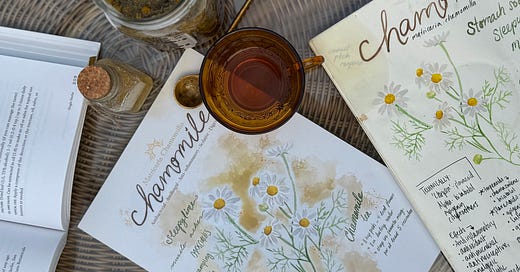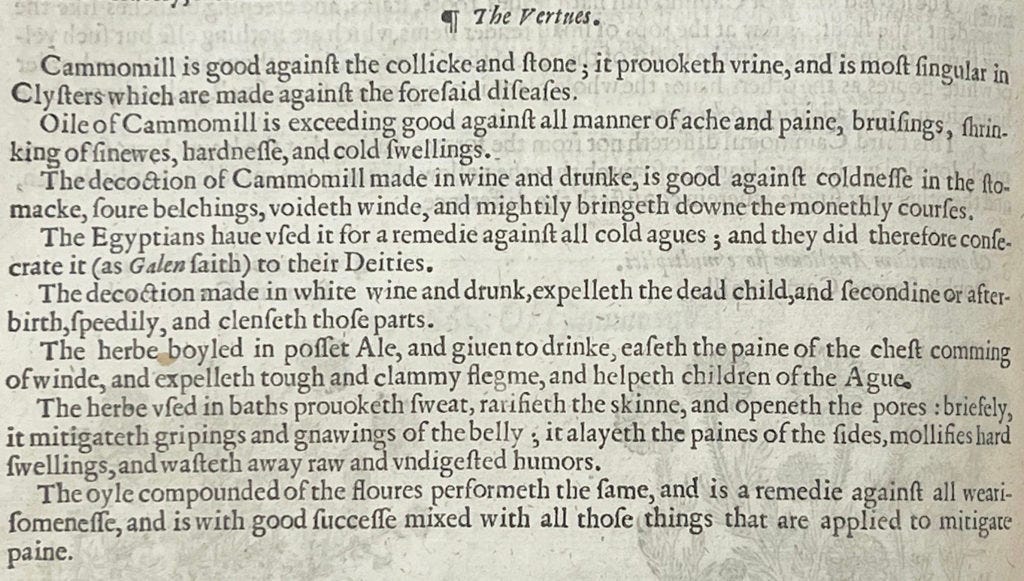Chamomile- the first herb you should have in your home apothecary, one of the most gentle, widely applicable and easy to use but powerful little plants! This article goes over its energetics, applications, preparations & some extra resources!
Okay I know February is over and we’re inching into March BUT I’m finally getting back into a flow again and have been planning this project for so long that I didn’t want to miss a month just because I was under a rock.
This year, each month, I’m going to focus on a different herb. Learn about it, create recipes with it, and PAINT it, then have a little herb print and download available at the end of the month. The idea is you can collect them all and build your own! This idea was birthed a while ago, when I realized how many herbs I was collecting and how underutilized so many of them were- I’m obsessed with herbology in theory but often dont take the time I would like to to really get to know different plants and their uses. This way, by focusing on an herb for a month, I can hopefully really sink my teeth into the study of it and bring you along on that journey.
(To download my Herb of the Month art or order a print, head to my shop or sign up to my Patreon to receive free monthly downloads or prints!)
I chose this as our first herb for a few reasons. One of the most well known benefits of chamomile (Matricaria Chamomilia) is its calming effect, often added to sleepytime tea blends or anti-anxiety potions. As a true believer in the soft-launch new year, I think rest is so underrated this time of year, and ESPECIALLY given all we’ve been navigating lately politically, economically, in the US and worldwide. We all need a little calm. It’s also associated with the sun and who couldn’t use a cup of sunshine in anticipation of spring?
Chamomile History
It’s hard to pinpoint a cultural origin for chamomile, as it has been used worldwide for so long. One of the earliest records of it is in the Ebers Papyrus, an Egyptian medical compendium from around 1550 BCE. The Egyptians cultivated it to use in religious ceremonies as they associated it with their sun god, Ra. They also believed it to cure malaria and used it for poultices and fevers.
It was beloved in Greece and Rome, and Hippocrates who is known as the “father of medicine” described its benefits in about 500 BCE.
In the Middle Ages it was used as a ‘strewing herb’ which is the herbs they would place around rooms and on themselves to mask….unpleasant odors (I always think everyone must have been so stinky around then. Apparently they only bathed once a week??) It was known as the plant doctor as it made a great companion plant to others in a garden.
Keep reading with a 7-day free trial
Subscribe to Ebby’s Substack to keep reading this post and get 7 days of free access to the full post archives.






